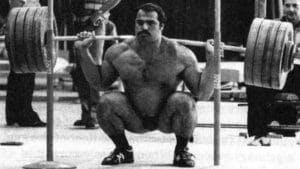
The Austrian Oak, introduced in 2012 at the Arnold Strongman Classic, is among one of the most interesting lifting events in the modern era. The oak — beautifully crafted entirely of wood — varies in weight yearly, but can typically reach excess of 460+ lbs.
Competitors are not only tasked with lifting this monstrosity from the ground, but they must attempt to press it overhead. Any competitor unable to press the oak is given a “lighter” variant weighing in at around 375 lbs.
In 2015, Žydrūnas Savickas sought to defy all logic by pressing the oak — which was particularly heavy that year, weighing in at 503 lbs — not once, but a total of four times. Žydrūnas would solidify himself as the world record holder for the event, and the only person that year to rep the giant log even once.
The overhead press is an incredibly complex movement, and while Žydrūnas Savickas makes it look easy, it’s important to take into account all of the muscles that are connected to the shoulder.
Although you don’t need to press the Austrian Oak, the following exercises we’re about to show you can impact your ability to lift objects overhead, whether that’s on the scale of putting dishes in the cabinet, or snatching, clean and jerk and the overhead press.
Shoulder Strength
Developing the many muscles of the rotator cuff is integral to developing true shoulder strength. This set of exercises is meant to challenge the rotator cuff and its surrounding muscles. The following exercises are as follows:
- Sidelying External Rotation
- Sidelying Shoulder Flexion
- Sidelying Horizontal Abduction
Shoulder Mobility
Not only is it important to build strength in the shoulder, but it’s just as important to build mobility in the shoulder so you can use that strength. These exercises put a focus on improving that shoulder mobility. The following exercises are as follows:
- Overhead Loaded Cane/PVC Pipe Flexion
- Supine Thoracic Extension (Remember: the thoracic spine is tied to shoulder girdle mobility!)
- Overhead Banded Shoulder Distraction


